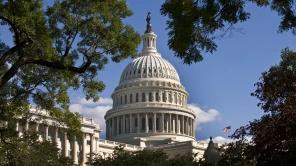What physicians and healthcare leaders need to know about these upcoming changes
The Centers for Medicare & Medicaid Services (CMS) has released the proposed rule for the Calendar Year (CY) 2026 Medicare Physician Fee Schedule (MPFS), and it brings meaningful — though in many ways temporary — changes to how physicians are paid. This year’s proposal reflects CMS’s broader efforts to realign incentives, support value-based care, and modernize reimbursement and quality reporting systems. For healthcare leaders, this rule offers short-term financial relief, signals longer-term shifts in accountability, and introduces new obligations, particularly in specialty care.
This summary outlines what’s changing, what remains unresolved, and what actions practices and administrators should be considering in light of the rule.
Payment updates: a temporary boost with important qualifiers
Beginning in 2026, CMS proposes separate conversion factors for Qualifying Alternative Payment Model Participants (QPs) and non-QP clinicians, paying physicians differently depending on whether they participate in certain value-based care models.1 Specifically:
- QPs who participate in Advanced Alternative Payment Models would see a 3.83% increase
- Non-QP clinicians would receive a 3.62% increase
Both groups would receive a modest increase, with QPs receiving about 5% more than non-QPs.
These proposed conversion factor updates are composed of three parts:
- A temporary 2.5% increase included in the One Big Beautiful Bill Act (OBBBA), which expires at the end of 2026
- A 0.75% increase for QPs and 0.25% for non-QPs under the existing statutory framework
- A 0.55% adjustment to account for updates in work relative value units (RVUs)
It is important to understand that these are changes to the conversion factor, not to every individual service rate. They offer the possibility of higher reimbursement if quality program metrics are met or exceeded. Actual reimbursement will depend on how a practice utilizes specific CPT codes and how those codes are valued through RVUs.
In short, this is a positive adjustment after multiple years of cuts or stagnant updates, particularly for ambulatory providers. However, the core issue remains: without a permanent, inflation-adjusted payment update, Medicare reimbursement continues to lag behind actual practice costs.
To determine your status as a Qualifying APM Participant and understand which conversion factor applies, visit CMS’s participation lookup tool.
A new ambulatory specialty model targets high-impact conditions
The CY 2026 proposed rule introduces a new mandatory quality payment model: the Ambulatory Specialty Model (ASM).2 Beginning January 1, 2027, the model will apply to specialists practicing in selected geographic areas who treat at least 20 Original Medicare patients per year with:
- Heart failure
- Low back pain
The ASM aims to improve the management of these high-cost, chronic conditions by:
- Requiring adherence to timely, evidence-based clinical guidelines
- Emphasizing coordination with primary care providers
- Holding physicians financially accountable for patient outcomes
Payment adjustments under ASM begin in 2029.3 CMS’s objective is to reduce avoidable hospitalizations, increase care consistency, and shift specialty care further into value-based frameworks. Providers included in ASM will need to prepare for increased documentation, population health coordination, and potential downside risk.
More information about the ASM is available through CMS’s Innovation Center.
Quality measure overhaul emphasizes prevention and outcomes
CMS continues its work to streamline and modernize quality program reporting. The proposed changes for 2026 include:
- Removing 10 existing measures that do not directly improve patient health outcomes
- Adding five new measures focused on prevention and chronic disease management, including screening for prediabetes4
These updates reflect CMS’s growing emphasis on meaningful, patient-centered outcomes over purely process-based metrics. Practices should evaluate how these changes intersect with their quality reporting workflows and adjust accordingly.
Simplification of telehealth policies for Medicare beneficiaries
CMS is proposing significant simplification to telehealth policy in 2026.5 Specifically, the rule would:
- Eliminate the distinction between “provisional” and “permanent” services on the Medicare Telehealth Services List
- Allow broader use of virtual supervision, with the exception of audio-only formats
- Permanently lift frequency limitations for telehealth services in inpatient, nursing facility, and critical care settings
These changes reflect CMS’s recognition of the growing role telehealth plays in modern care delivery, particularly in managing chronic disease and extending access to underserved communities.
In parallel, the One Big Beautiful Bill Act also introduced additional telehealth flexibilities.6 Notably:
- Telehealth services are now eligible for Health Savings Account (HSA) reimbursement
- High-deductible health plans (HDHPs) may now cover telehealth services before deductibles are met
Together, these changes remove key financial and regulatory barriers to virtual care.
Since 2001, physician payments under Medicare have declined by 33% when adjusted for inflation.
The long-term Medicare payment problem remains unsolved
While the OBBBA included a 2.5% temporary increase to the Medicare Physician Fee Schedule for 2026, it did not provide a permanent or structural fix to Medicare reimbursement.7 Earlier versions of the legislation included provisions that would have tied annual updates to the Medical Economic Index (MEI), offering a partial solution to inflationary pressures. These provisions were not included in the final bill.
As a result, Medicare physician payment continues to erode in real terms. Since 2001, physician payments under Medicare have declined by 33% when adjusted for inflation.8 The gap between public reimbursement and the actual cost of delivering care continues to widen—particularly for independent practices and outpatient providers.
Absent a long-term fix, providers should continue to expect year-to-year uncertainty and potential instability in the Medicare payment landscape.
CMS is accepting public comments through September 12
As with all proposed rules, the CY 2026 MPFS is open for public comment. CMS is accepting feedback through September 12, 2025. Input from physicians, practice leaders, and stakeholders plays a critical role in shaping the final rule.
Comments can be submitted directly through the Federal Register.
What this means for your organization
In many ways, the CY 2026 MPFS is a step in the right direction, delivering a modest financial reprieve, improving measurement frameworks, and investing in virtual and specialty care models. But it also raises important questions about the long-term sustainability of Medicare’s approach to physician payment and care delivery and adds another mandatory program and additional risk to many practices serving older patients with chronic conditions.
- Understand how changes will affect your payments and reporting
- Begin preparing for mandatory models like ASM
- Engage in the comment process to shape the final rule
athenahealth’s Government and Regulatory Affairs team will continue to provide webinars, policy briefings, and tailored guidance to help your organization stay ahead of federal changes.
To learn more, read how rising costs and policy risk are causing shifts in practice financial stability.
More healthcare compliance resources
Continue exploring
1. CMS. (2025, July). Calendar Year (CY) 2026 Medicare Physician Fee Schedule (PFS) Proposed Rule (CMS-1832-P). https://www.cms.gov/newsroom/fact-sheets/calendar-year-cy-2026-medicare-physician-fee-schedule-pfs-proposed-rule-cms-1832-p
2. CMS. (July, 2025). ASM (Ambulatory Specialty Model). https://www.cms.gov/priorities/innovation/innovation-models/asm
3. CMS. (2025). Ambulatory Specialty Model Fact Sheet. https://www.cms.gov/files/document/asm-model-fact-sheet.pdf
4. CMS. 2026 Medicare Physician Fee Schedule Proposed Rule. https://www.cms.gov/newsroom/fact-sheets/calendar-year-cy-2026-medicare-physician-fee-schedule-pfs-proposed-rule-cms-1832-p
5. CMS. 2026 Medicare Physician Fee Schedule Proposed Rule. https://www.cms.gov/newsroom/fact-sheets/calendar-year-cy-2026-medicare-physician-fee-schedule-pfs-proposed-rule-cms-1832-p
6. Congress.gov. (2025). H.R.1 - One Big Beautiful Bill Act. https://www.congress.gov/bill/119th-congress/house-bill/1/text
7. AMA. (2025, July). Physicians will see Medicare payments rise in 2026. https://www.ama-assn.org/practice-management/medicare-medicaid/physicians-will-see-medicare-payments-rise-2026
8. AMA. (2025, April). April 4, 2025: Medicare Payment Reform Advocacy Update. https://www.ama-assn.org/health-care-advocacy/advocacy-update/april-4-2025-medicare-payment-reform-advocacy-update












